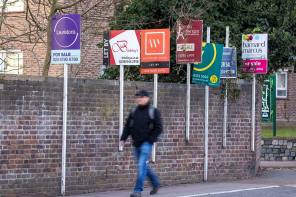

The cost of buy-to-let (BTL) mortgages could be about to enter a period of stabilisation or even rises, according to recent analysis.
Mortgage Brain, a provider of software solutions to lenders and intermediary mortgage advisers, made the prediction following year-on-year reductions in the cost of BTL mortgages over the past three years.
The cost of an 80 per cent loan to value (LTV) two-year fixed mortgage is now 18 per cent lower than at the start of 2014 and down 11 per cent from a year ago.
Its analysis revealed the lowest rate three-year fixed BTL with an 80 per cent LTV at 3.39 per cent is 16 per cent lower than it was three years ago and 10 per cent lower than last year.
But Mortgage Brain chief executive Mark Lofthouse said: “Like our recent residential mortgage product analysis the buy-to-let sector looks like it could be levelling out and moving away from the long period of historic lows in terms of costs and rates.
“Buy-to-let investors can still take advantage of some good savings and low rates when compared to this time last year. However, the mixed and marginal movement in costs over the past three months could be seen as a further sign of stability, or even the start of a period of rises.”
Analysis over the past three months conducted by the business indicated there was mixed movement in the cost of all the main BTL products.
It cited a three-year fixed BTL mortgage with an 80 per cent LTV as an example, as it now costs just 4 per cent less than the same product did three months ago.
While the cost of a two-year fixed (60 per cent and 80 per cent LTV), a three-year fixed (70 per cent LTV) and a five-year fixed with a 60 per cent LTV are all down by only 1 per cent compared to November 2016.
It reported a marginal 1 per cent increase in cost for a two-year tracker BTL mortgage with a 70 per cent LTV, compared to a two-year fixed (70 per cent LTV), a two-year Tracker (60 per cent LTV) and a five-year fixed BTL mortgage (70 per cent and 80 per cent LTV) which have all remained “inactive”, with mortgage costs in line with those offered at the beginning of November 2016.
The buy-to-let mortgage market has remained buoyant even as it faces a number of changes to taxation and policy.
Robert Sinclair, chief executive of the Association of Mortgage Intermediaries said: "As a long-term investment it has historically performed well, therefore as an asset class it still appears popular as a capital investment, even if the income gains are being eradicated by tax changes."
The current state of the UK’s buy-to-let market is explored further in this guide which also looks at how advisers can ensure they have all the information to recommend buy-to-let investing to their clients.
eleanor.duncan@ft.com



